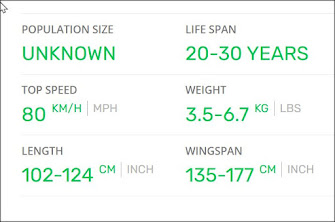Grey Herons are unmistakeable – tall, with long legs, a long beak and grey, black and white feathering. They can stand with their neck stretched out, looking for food, or hunched down with their neck bent over their chest.
The Grey Heron is a distinctive species with grey, black, and white plumage. It is often seen along rivers or lake margins, or standing in flooded fields.
In flight their large size, impressive wingspan, long legs, and folded neck give them an unmistakable silhouette. Largely silent away from colonies, flight is sometimes accompanied by a harsh ‘kraank’ call.
Grey Herons gather to nest in treetop sites called heronries, some of which have been occupied for many decades. These have been monitored in the UK since 1928 through the Heronries Census. Overall the UK's breeding population has increased, with numbers peaking in the early 2000, but with some more recent declines.
The Grey Heron (Ardea cinerea) is a statuesque wading bird belonging to the family Ardeidae. It is a familiar sight in both rural and urban settings, often seen standing stoically along the water's edge. An adult Grey Heron is a large bird, reaching up to 100 cm in height, with a wingspan between 155 to 195 cm. It weighs between 1 to 2 kg. The plumage is predominantly ashy-grey above, with a greyish-white underbelly and some black on the flanks. A striking feature is the white head and neck adorned with a broad black stripe that extends from the eye to the black crest. The beak is pinkish-yellow, long, and sharply pointed, while the legs are a brown hue.
When identifying the Grey Heron, look for the white head with the black supercilium and crest, the long grey neck, and the ashy-grey wings and back. The underparts are lighter, and the legs are long and brown. Juveniles can be distinguished by their duller grey neck and smaller crest. The beak is a useful indicator of age, being brighter in breeding adults.
Grey Herons are highly adaptable and can be found in a variety of watery habitats including lakes, rivers, ponds, marshes, and coastal environments. They require shallow waters for foraging or areas with shelving margins where they can wade.
Native to temperate Europe and Asia, as well as parts of Africa, the Grey Heron has a broad range. Northern populations may migrate southwards in autumn, while others remain resident year-round. Vagrant sightings have occurred in the Caribbean, Bermuda, and parts of North America.
The Grey Heron exhibits a slow, deliberate flight with its neck retracted in an S-shape. It is known for its solitary foraging habits, often standing motionless or stalking prey through shallow waters. It is also a communal rooster, often found in trees or cliffs at night.
The primary call of the Grey Heron is a loud croaking "fraaank." At breeding colonies, a variety of guttural and raucous noises can be heard, including greeting calls between mates and alarm calls when predators are nearby.
Breeding takes place in colonies, or heronries, typically in high trees near water. Nests are reused and added to each year. The breeding season sees a clutch of three to five bluish-green eggs laid, which both parents incubate. Chicks fledge at 7-8 weeks old.
The Grey Heron can be confused with the larger North American Great Blue Heron or the South American Cocoi Heron. However, it can be distinguished by its size and the coloration of its flanks and thighs.
Grey Herons are apex predators within their ecosystem, feeding on a variety of aquatic creatures such as fish, amphibians, crustaceans, and insects. They have also been known to consume small mammals and juvenile birds.
The Grey Heron is classified as Least Concern by the IUCN, indicating a stable and widespread population.



























%2022.jpg)
%2023.jpg)

%20(Ploceus%20melanocephalus)%2020.jpg)










%2021.jpg)
%2022.jpg)
%2023.jpg)




